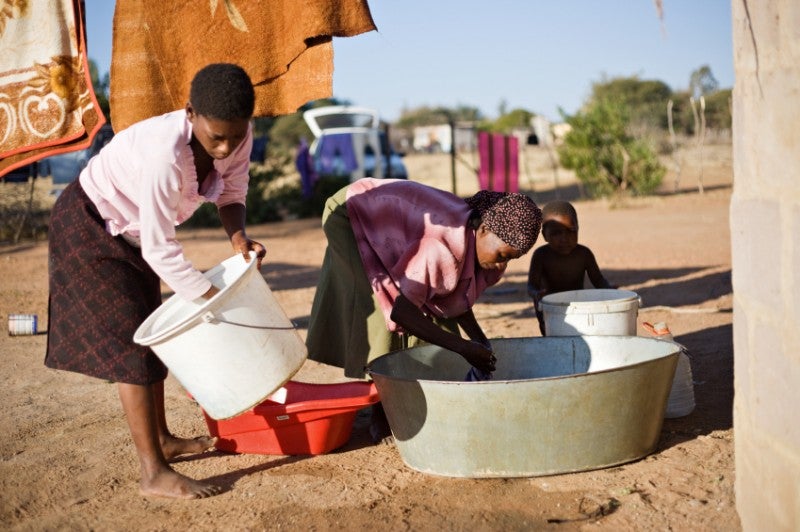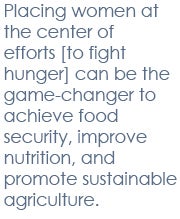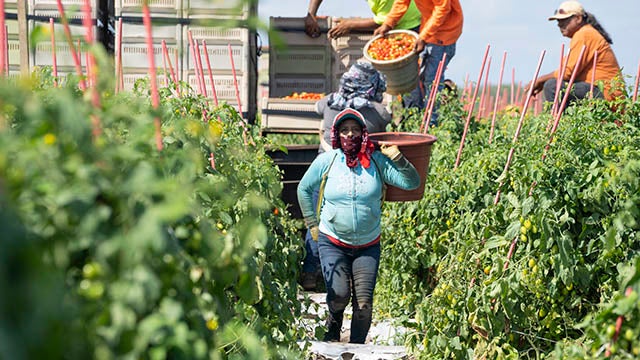
(Photo Credit: istockphoto)
*This article originally appeared in The Huffington Post.
At the end of this month, world leaders will converge on United Nations headquarters in New York to affirm and formally adopt the global sustainable development priorities for the next 15 years. All of the goals are laudable and worth pursuing. They are intertwined and should be pursued simultaneously. Achieving them will immeasurably improve the lives of billions of people. One of the most important efforts is the second goal: “End Hunger.”
Hunger is a pervasive element of impoverished communities. Many smallholder farmers across the world eke out a difficult existence and struggle to provide their children with the nourishment they need to be healthy, happy, and reach their full potential. Hunger is a grave obstacle to a dignified life. Children who experience stunted growth due to malnutrition face a life-altering setback. By ending hunger and improving nutrition across the world, we can give people a pathway out of poverty and strengthen peaceful societal development.
The agriculture industry can help address this problem by increasing food quality and improving logistics. However, these steps alone will not resolve this issue, which requires a wider lens.

Women: Key Players in Agriculture
The challenges in fighting hunger are immense, but placing women at the center of efforts can be the game-changer to achieve food security, improve nutrition, and promote sustainable agriculture. Women comprise the majority of food producers, particularly in low-income countries where families rely on smallholder farms for food and income. Farmers use hand-held tools to fetch water for irrigation on foot, chop wood for fuel, and mill cereal crops by hand. The sheer amount of human labor involved in this kind of farming is daunting. And as women do much of this work, in addition to their household and care work, their workdays are typically up to 50 percent longer than men’s. And yet women and girls tend to receive a smaller portion of the food produced.
Improving efficiencies and providing agricultural technology to female smallholder farmers is a key step, but not enough. Broader action is needed. Women’s rights to own, inherit, and control land must be legally protected. To meet food security goals, global and national decision makers must also prioritize women’s health and education. Healthy women are more productive and better able to feed, care for, and educate their children.
The Connection Between Gender Equality And Food Security
In rural areas, women often have limited or no access to health services, including sexual and reproductive health services. Women and adolescent girls who lack access to modern contraception, skilled birth attendance, maternal and infant care, nutrition, and health services in general are more susceptible to maternal deaths, unplanned pregnancies, and unsafe abortions. Their risks are compounded by early and forced marriage.
When women, the primary food producers, have unmet health needs and lack autonomy over their health choices, the effects can be devastating for the individual woman as well as her family and community. Providing women with equitable access to comprehensive health care and protecting their sexual and reproductive health and rights is essential.
When maternal health improves, infant survival improves, and women tend to have fewer children over the course of their lifetimes — giving parents the ability to provide each child with better nutrition and education. In countries where women, on average, have fewer children and better access to health care — including voluntary family planning, antenatal, and post-natal care — maternal, newborn, and infant mortality is lower, rates of malnutrition are lower, and food security is stronger.
Ending Hunger: The Importance Of A “Holistic Approach”
Ending hunger and malnutrition will not be achieved by focusing on food security and agriculture alone. Global and national leaders must acknowledge the critical need to link action in addressing food security to national strategies across sectors. This must include realizing the human rights of women and girls, investing in gender equality — including in girls’ education, eliminating violence and harmful practices, and upholding sexual and reproductive health rights.
Given the strong correlation between food security and maternal and infant mortality rates, agricultural and food security programs must expand their horizons to be successful. Let us commit to a renewed emphasis on providing for dietary diversity, nutritional fortification, and health services for women, adolescent girls, and children as part of our goal of ending hunger. By taking a holistic approach to ending hunger, women and girls can be empowered to reach their full potential.
When women are empowered and their human rights are realized, the positive effects will spill over not only to their families, but also their communities and their nations.
This post is part of a series produced by The Huffington Post, “What’s Working: Sustainable Development Goals,” in conjunction with the United Nations’ Sustainable Development Goals (SDGs).
Her Excellency Tarja Halonen is the former president of the Republic of Finland. She is a member of the Global Leaders Council for Reproductive Health and the Aspen Institute Food Security Strategy Group.

